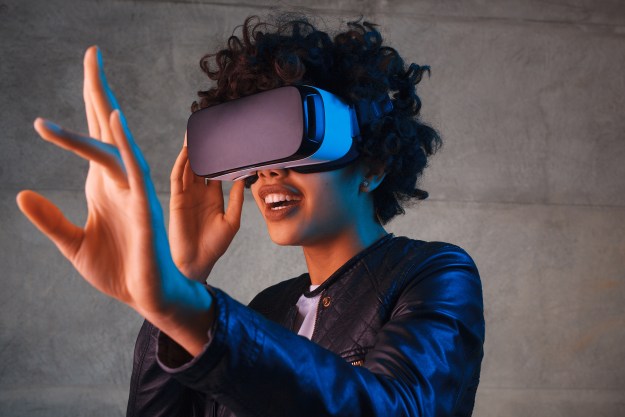When it comes to communication mediums that let you clearly express yourself, emails are generally better than text messages, phone calls are better than emails, and Zoom-style video calls are better than phone calls. Could virtual reality be better than a video call?
That’s the bet that Spatial, a startup led by a team of former Google, Samsung, Microsoft, and Apple employees, is making with a tool it pitches as being along the lines of Slack and Zoom having a VR/AR baby. The idea is to increase the immersive aspect of today’s crop of chat apps — a category that has, unsurprisingly, boomed during the pandemic — by moving beyond the flat, video-based conversations of a Zoom call and into the three-dimensional realm of virtual reality.
Remember that VR training scene from The Matrix? It’s a bit like that, but with you and your teams gathered around for a corporate morning huddle instead of learning kickass kung fu to take down the machines.
“Spatial is a collaboration tool that allows you to enter a virtual workspace with your co-workers or friends — to create, review, or brainstorm in the physical space around you, but with the limitless abilities of digital tools,” Jacob Lowenstein, head of business at Spatial, told Digital Trends. “In AR, you can literally beam avatars of your teammates into your living room to collaborate with you in your real-world environment.”
To “enter Spatial” is a quick and easy process. Visit the company’s website and upload a picture of yourself or snap a quick selfie. Spatial will then turn this into a 3D avatar that you can use in the virtual world. The faces have lip-syncing and eye-tracking technology, and Lowenstein said an update is on the way that will improve facial expressions.
A game-changer in the workplace?
Spatial is device-agnostic and works with an assortment of AR and VR headsets including the Oculus Quest, Hololens, Magic Leap, and the soon-to-launch Nreal. There’s also a web app and native iOS and Android applications available.
Alongside seeing your colleagues in three dimensions (who would have thought, one year ago, that this would be such a novelty?), there’s the ability to easily pull 3D models into the virtual world, plus all the usual Google Drive and Slack integration, the ability to share web links, real-time editing, and whatever else you’d expect from any workplace chat app.
Of course, in many cases tools like Zoom are just fine for work. So why add the extra gimmick on top of this? “Zoom calls hold huge value and have become synonymous with 2020,” Lowenstein agreed. “But those collaborative sessions with several people is where Zoom quickly breaks down. Spatial offers that sense of presence and nonverbal cues that are missing from 2D video calls. Everyone suddenly feels like an active and engaged participant. The feeling is incredibly visceral. So many customers have told us just how important that emotional connection has been for their teams, this year in particular. It really does feel like you are once again working side by side again.”
Editors' Recommendations
- We finally might know what Apple will call its AR/VR headset
- What will Apple call its VR headset? We might have an answer
- Apple’s mixed reality headset could be as powerful as the MacBook Pro
- Apple’s new AR headset may use Face ID technology to track hand gestures
- Microsoft and Samsung could team up on new AR headset


